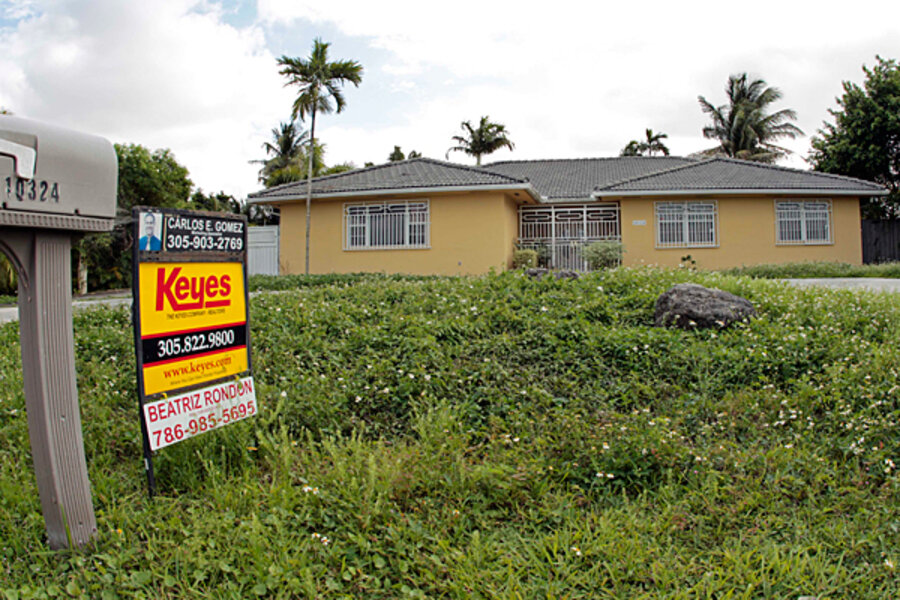Home sales up. Is the housing market finally turning around?
Loading...
The housing market shows more signs of being on the mend – although the road to full recovery still has some miles ahead.
Sales of previously owned homes rose in November, gaining for the second month in a row, the National Association of Realtors reported Wednesday. Home-sales volume is up 12 percent from its level a year ago, the group said.
The number of unsold homes now stands at a seven months' supply, down from more than nine months as recently as July, the realtors association said.
These indicators, housing-market analysts say, reflect progress in a housing market still struggling to recover after a historic boom and bust. On Tuesday, home builders reported a rise in new-home starts last month, and they said permits (an early gauge of construction in the pipeline) are increasing.
Also, over the past year, the volume of mortgages in delinquency has been falling.
Still, loan delinquencies and foreclosures remain unusually high. And although mortgage rates have dipped to about 4 percent, many would-be buyers have trouble getting approval.
"The increase in sales ... suggests that housing has passed the worst," according to an analysis by Capital Economics in Toronto.
For its part, the National Association of Realtors emphasized the positive trend, even as it revised past numbers to reveal that home sales have been weaker over the past four years than many observers realized.
“Sales reached the highest mark in 10 months, and ... a genuine sustained sales recovery appears to be developing,” NAR chief economist Lawrence Yun said in a statement accompanying the numbers. “It looks like more people are realizing the great opportunity that exists in today’s market for buyers with long-term plans.”
The NAR revisions to reports from prior months were big: For the period of 2007 through 2010, sales and inventory were revised downward by 14.3 percent. That means, for instance, that NAR is now reporting sales of 4.2 million homes in 2010, where its previously reported a figure of 4.9 million.
Data problems emerged since 2007 for several reasons, the group said: "For sale by owner" transactions fell sharply (a shift not initially captured by NAR), some sales of newly built homes were incorrectly included in the existing-home tally, some properties were counted in more than one metro area, and there were some "issues related to house flipping" (quick resale of homes).
As sale transactions were overestimated, so were the numbers for homes on the market. Thus the revisions did not greatly affect estimates of "months supply" of homes for sale.
The data downgrade is largely about the rearview mirror, however. A look at the present, with the numbers now adjusted, shows that sales appear to be on the rise, along with home building.
Granted, some big challenges remain.
The NAR report cited a high number of "contract failures," in which deals to sell a home fall through because of things like declined mortgage applications or home appraisals that fail to match the negotiated price.
Perhaps the market's biggest problem is the "shadow inventory" of homes that are likely to come on the market, such as through foreclosure. Although the seven-month supply shown in the NAR data is not that high, another five months of supply may sit uncounted on the sidelines. That estimate comes from CoreLogic – a firm that tracks housing-market trends such as homes with seriously delinquent loans that are not yet in foreclosure.
Over time, if an economic recovery gains traction, that shadow inventory should decline as more homeowners find ways to avoid foreclosure or sell their homes.
The share of loans that are delinquent has improved over the past year, according to another data firm, Lender Processing Services. But about 1.8 million properties have mortgages at least 90 days past due.





